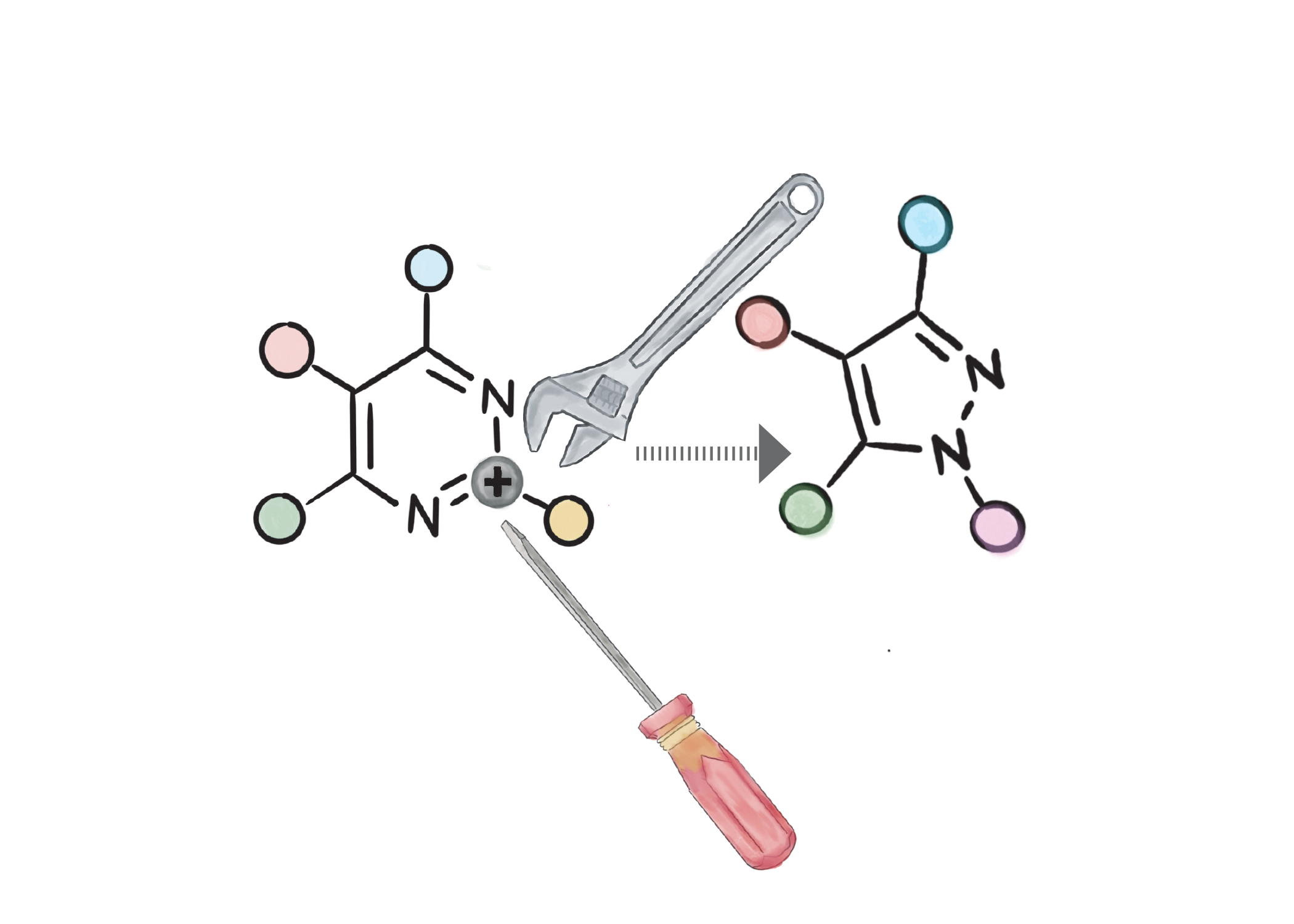Giving drugs better backbones

Think of a molecule as a cake. The layers of the cake are parts of a molecule’s “skeleton,” and the icing and decorations represent functional groups sticking off the molecule. The icing is relatively easy to alter, but after the cake has been put together, the central layers are not. This is the challenge that pharmaceutical scientists face while screening new molecules to discover and improve drugs. If they want to alter the skeleton, they often need to develop an entirely new synthetic route for a molecule that may not even have the desired effect. Here’s where skeletal editing comes into play.
Skeletal editing is a relatively new research field that develops techniques to add, delete, or swap an atom in a molecule’s backbone. At the forefront of the field is the Sarpong group in the Department of Chemistry at UC Berkeley. The group has developed a technique using milder conditions to delete a carbon in a pyrimidine, which they demonstrated on pharmaceutically relevant molecules such as the blood thinner Xarelto. The method also opens access to new structures that were previously inaccessible due to the difficulties of functionalizing the C-H bonds of pyrazoles.
Skeletal editing has revolutionized the world of pharmaceutical research, helping to edit the skeletons of fully formed molecules into potentially lifesaving drugs more quickly, as well as unlocking previously inaccessible molecules. Skeletal editing has already demonstrated its great value and, as a new field, has a multitude of discoveries on the horizon.
This article is part of the Fall 2023 issue.




